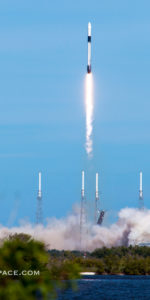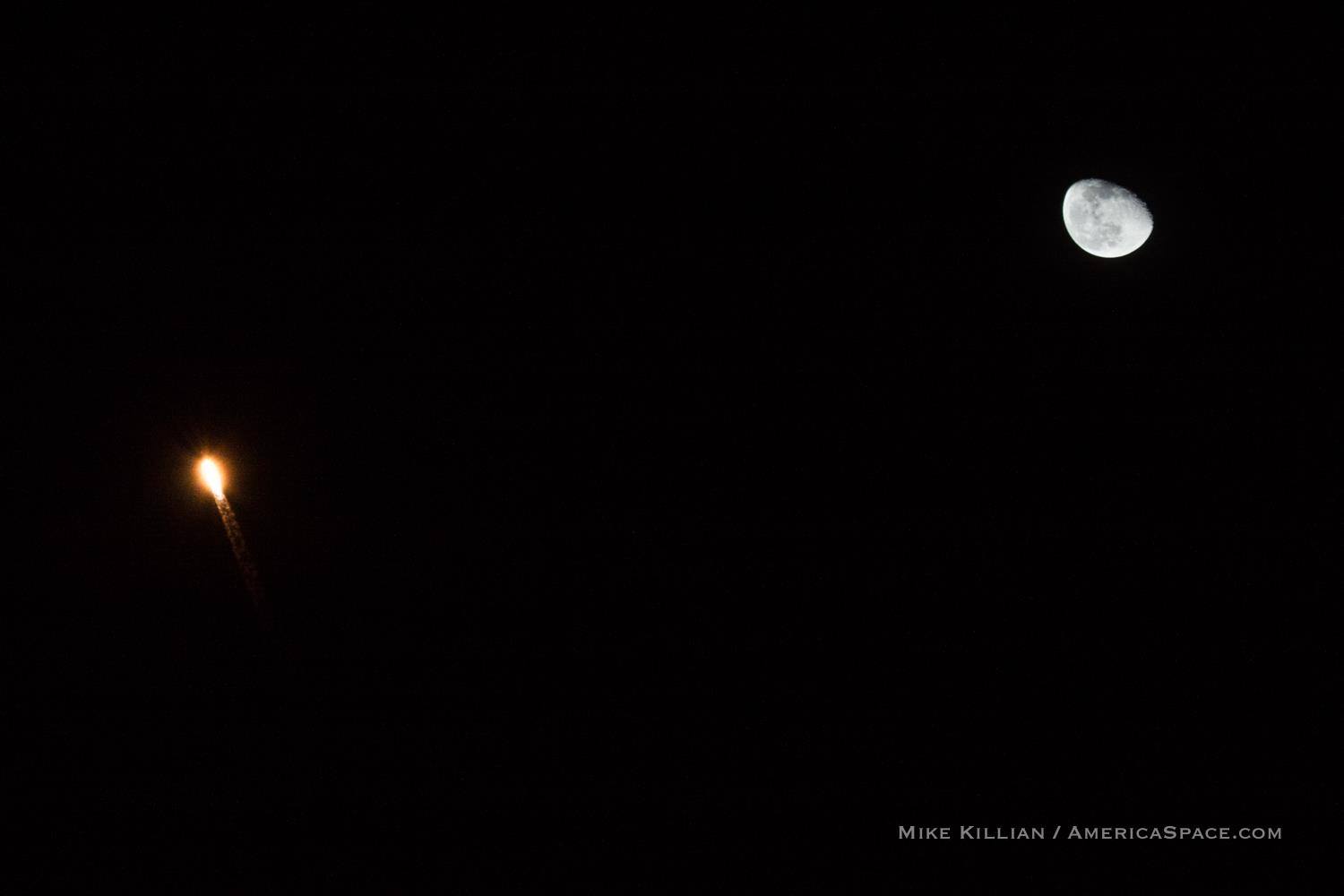
Today NASA announced more plans to get back to the moon, this time to stay, because science, with the goal of having boots on the ground within 10 years. And the space agency, which still remains the only entity to have ever sent people to another world during the Apollo era, will be heavily involved with private industry to get it done.
But unlike Apollo, NASA won’t purchase, own and operate the hardware, but rather the agency will buy the services, and NASA expects to be just one of many customers that will use these commercial landing services.
Nine U.S. companies now are eligible to bid on NASA delivery services to the moon’s surface through what the space agency calls Commercial Lunar Payload Services (CLPS) contracts, where they will compete for delivering science and technology payloads for NASA, including payload integration and operations, launching from Earth and landing on the lunar surface.

Robotic scientific and small lander demonstration missions will pave the way, beginning as soon as 2019, and as the technology evolves we’ll see the larger landers developed which will eventually carry crews to and from the surface. NASA wants to see development of a minimum 1,100 pound (500 kilogram) lander, which is targeted to launch in 2022, with two mid-size lander demonstration missions to understand the requirements and systems needed for a human class lander.
“Ongoing small payload delivery missions would provide important data on landing precision, long-term survivability, guidance and navigation for future landers,’ says NASA.
“This is a response to the science community, who has for a long time decided that we needed to do science on the surface of the moon,” said NASA Administrator Jim Bridenstine. “And yet, for a long time NASA has focused the moon within the Human Exploration and Operations Mission Directorate, and not the Science Mission Directorate. Now we’re changing that”

“We believe there’s a lot of amazing science that we can do on the surface of the moon, science we can’t do anywhere other than the surface of the moon,” he added. “Going to the moon commercially with our partners is being driven by the Science Mission Directorate at NASA, so that’s a big change for this agency.”
NASA is confident that long-term exploration and development of the Moon will give humanity the experience for the next giant leap – human missions to Mars and destinations beyond.
The selected companies are:
- Astrobotic Technology, Inc.: Pittsburgh
- Deep Space Systems: Littleton, Colorado
- Draper: Cambridge, Massachusetts
- Firefly Aerospace, Inc.: Cedar Park, Texas
- Intuitive Machines, LLC: Houston
- Lockheed Martin Space: Littleton, Colorado
- Masten Space Systems, Inc.: Mojave, California
- Moon Express: Cape Canaveral, Florida
- Orbit Beyond: Edison, New Jersey
“We are excited to leverage our interplanetary lander designs and experience to help NASA build a new economy on and around the Moon, and beyond,” said Lisa Callahan, vice president and general manager for Commercial Civil Space at Lockheed Martin. “Lockheed Martin has built more interplanetary spacecraft than all other U.S. companies combined, including four successful Mars landers. On our last 10 interplanetary missions for NASA, we delivered on or ahead of schedule, and on budget.”
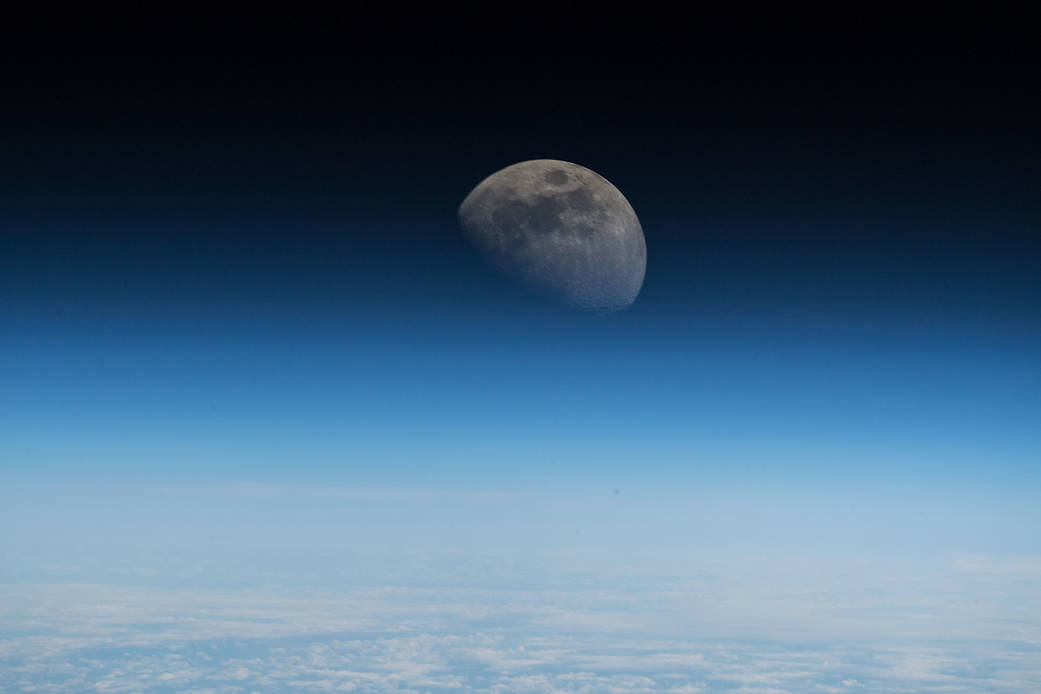
“We are eager to apply our capability-driven approach refined over the last decade as we go to the lunar surface,” said Sean Mahoney, CEO of Masten Space Systems. “We are eager to work with NASA to enable new business models that will unlock the potential of the cislunar economy and enable humans to return to the moon.”
“This contract award recognizes Firefly’s viable technical approach to deliver NASA science payloads and other commercial cargo to the lunar surface, along with the viability of its business plan and financial resources to develop Firefly’s CLPS system,” said Firefly CEO Dr. Tom Markusic. “In conjunction with our Beta launch vehicle and our partnership with Intuitive Machines, Firefly will provide an integrated lunar services offering, from the launch pad to the surface of the Moon. We are honored to partner with NASA in an extraordinary effort that will broaden humanity’s knowledge of the cosmos and inspire a new generation of space entrepreneurs.”
“We are humbled by this selection to return America to the Moon. Astrobotic has steadily developed our lunar delivery service with a methodical, technically sound lander program validated by world-class company partners like ULA, Dynetics, and Airbus DS. It is gratifying to now receive this validation from the most accomplished space agency in the world.” said Astrobotic CEO John Thornton. “We are eager to add NASA to our existing manifest of commercial customers, and get America back on the surface as soon as possible.”
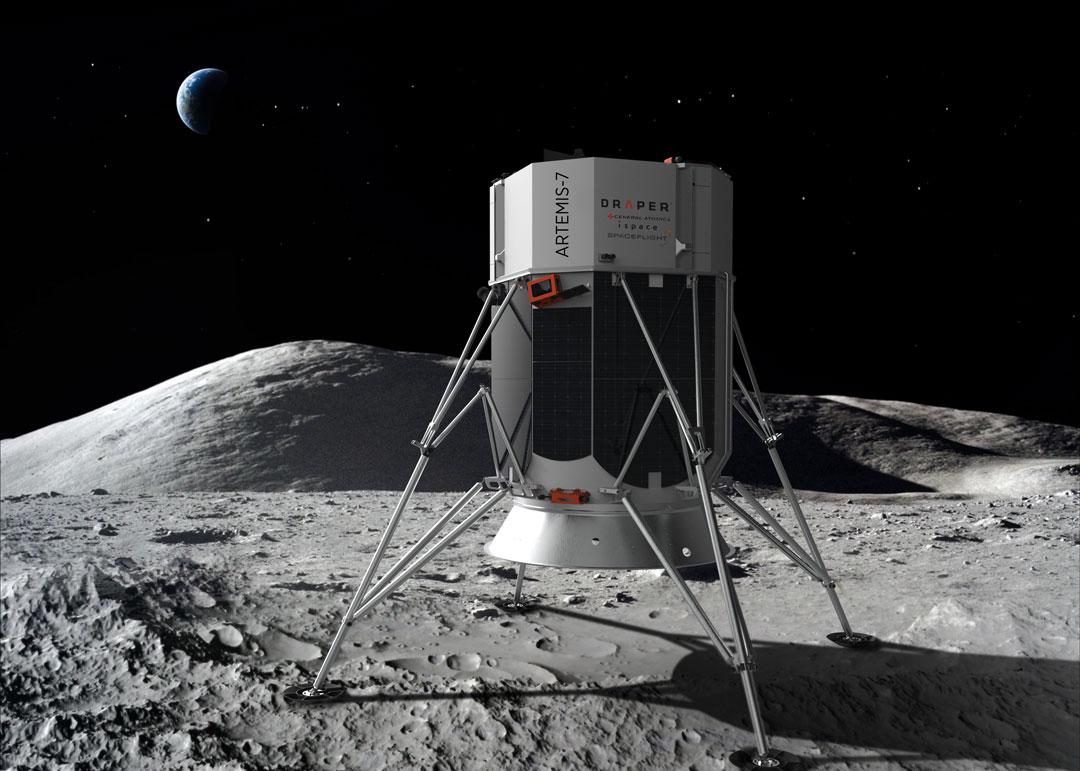
“The Artemis-7 design will fly multiple times before its first CLPS mission,” explained Seamus Tuohy, principal director of space systems, Draper. “Our lander design has secured substantial private funding. When you combine those investments with the extensible capability of the team and our history of delivering humans to the moon and bringing them back, we’re positioned well to meet NASA’s mission needs.”
The announcement is just the latest in an ongoing trend for the space agency in partnering heavily with private industry, not only fostering development of the hardware financially, but also serving as a customer. NASA already contracts with various companies for launching science missions and resupply services to the International Space Station, and soon will begin flying astronauts to and from on private vehicles as well, courtesy of SpaceX, Boeing and United Launch Alliance (ULA).
Thus far, it has been working out, and while there will always be delays and setbacks along the way (space is not easy as we know, and both SpaceX and Boeing have suffered numerous financial and technical setbacks in getting crews flying for NASA), overall it seems to have been the correct approach, and one which many in the aerospace industry have wanted to see for decades, being that private industry can do things competitively and, therefore, cheaper.
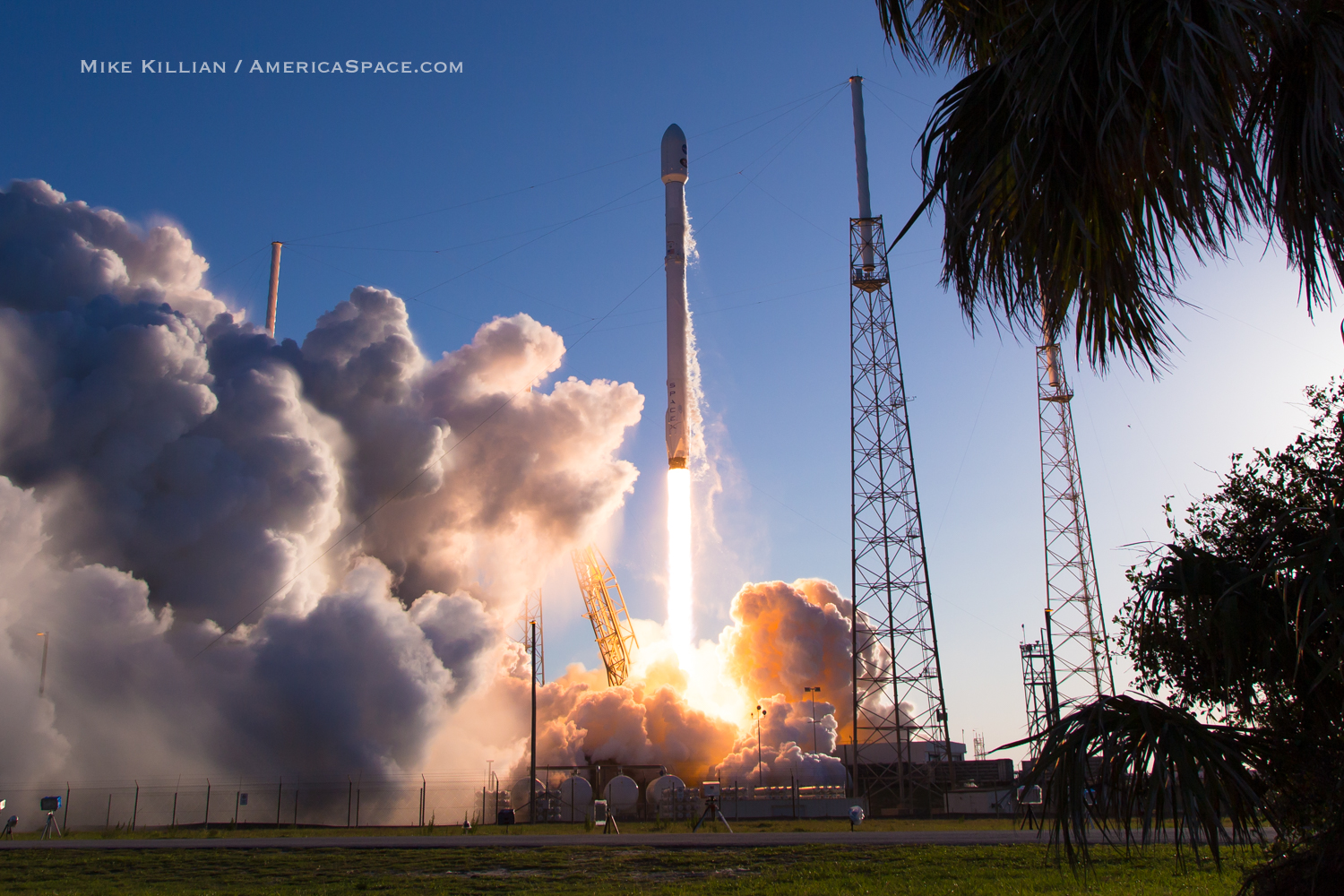
What science missions will go to the moon, and what instruments will be used, is something NASA is still working on. But the moon also offers vast resources which can be exploited, such as water, which can aid in everything from making oxygen to food to rocket fuel. Crews would also bring 3D printers, giving them the ability to produce things they may need out of the moon’s own rocks. Then companies will also provide a live-feed of the landing as they happen.
In October, NASA issued a call for potential lunar instruments and technologies to study the Moon, with proposals due in January.
Spacecraft currently orbiting the moon such as NASA’s Lunar Reconnaissance Orbiter (LRO) will aid in selecting landing sites, as well as providing imagery of the landings and surface operations from its orbit high above. Bridenstine also recognized the need to avoid prolonged radiation exposure, noting that a long-term base would likely be underground or covered in lunar regolith to protect people from the worst of the sun’s radiation.
So NASA is sticking with private (and international) partnerships for the moon, and will do so with previously announced plans to put a Deep Space Gateway in lunar orbit, which will support not only missions to and from the surface, but missions beyond the moon as well.
“This is a venture capital kind of effort,” says Bridenstine. “At the end of the day the risk is high, but the return is also very high for a low investment.”
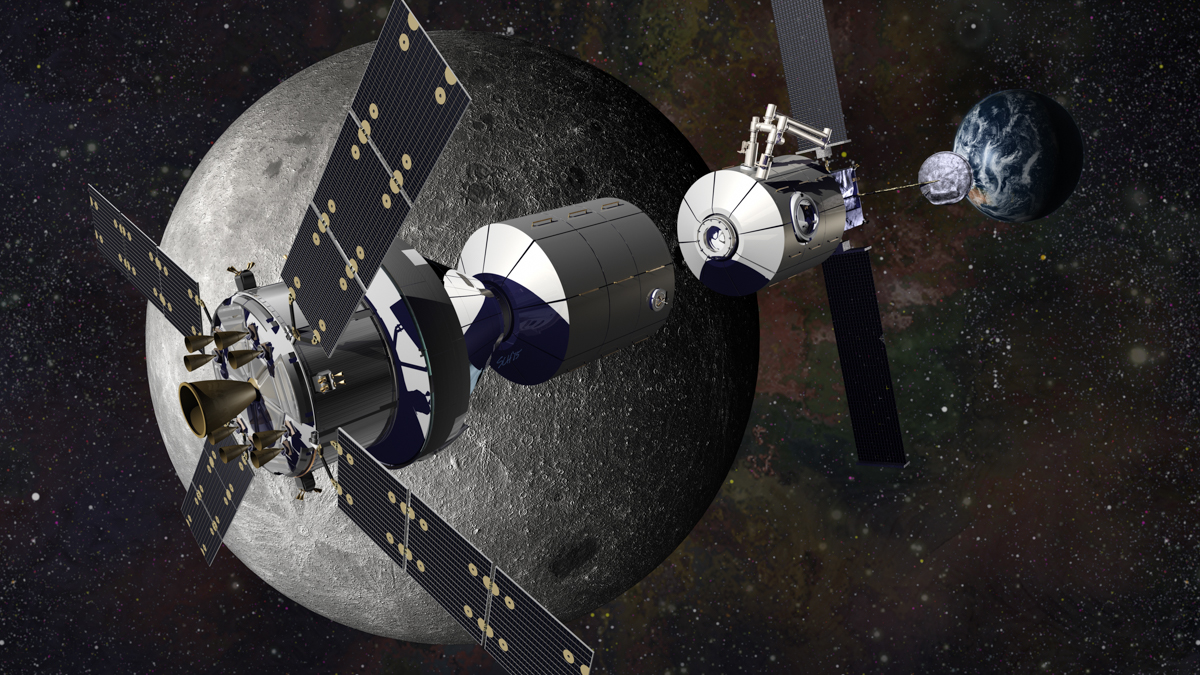
NASA’s CLPS program is a result of President Donald Trump’s White House Space Policy Directive 1, signed in December 2017, which orders a change in national space policy that provides for a U.S.-led, integrated program with private sector partners for a human return to the Moon, followed by missions to Mars and beyond.
However, Bridenstine made no mention of where the agency’s own controversial rocket and deep-space crew capsule, the Space Launch System (SLS) rocket and Orion spacecraft, come into play with getting back to the moon. Critics argue the program is way over budget and way behind schedule, especially considering the fact that companies such as SpaceX, ULA and Blue Origin are developing heavy launch vehicles which can do the same, at a fraction of the cost, and with reusable technology at a rapid turnaround rate between missions.
SLS for example will launch on four incredible RS-25 engines, modified reusable engines which once powered the space shuttle. But instead of saving them to be used again, the engines would be discarded to the depths of the Atlantic Ocean, a sad waste of something already proven to be extremely reliable and reusable (and expensive).
NASA hopes to launch the first SLS Orion on a flight test in 2020, with the first crew to fly around the moon and back in the following couple years.
The CLPS contracts are, “indefinite delivery, indefinite quantity contracts with a combined maximum contract value of $2.6 billion during the next 10 years,” says NASA. “The agency will look at a number of factors when comparing the bids, such as technical feasibility, price and schedule.”
FOLLOW AmericaSpace on Facebook and Twitter!
.





